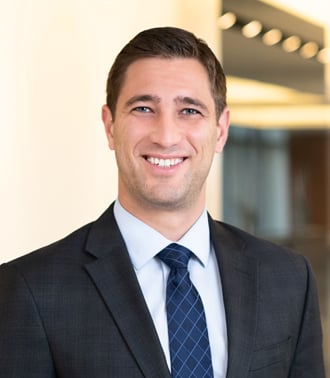The Supreme Court Remands Goldman Class Action for Consideration of “Generality”: A Basic Ruling on Complicated Issues of Securities Law
On June 21, 2021, the US Supreme Court decided Goldman Sachs Group, Inc., et al. (Petitioners) v. Arkansas Teacher Retirement System, a closely watched case that Petitioners touted as “the most important securities case to come before the Court since Halliburton Co. v. Erica P. John Fund, Inc. (Halliburton II), 573 US 258 (2014).” As discussed in previous advisories, the case concerns the “Basic presumption,” a rule born out of a 1988 Supreme Court decision that allows a court to presume class-wide “reliance” on a defendant’s alleged misrepresentations if the plaintiff establishes certain prerequisites. Basic v. Levinson, 485 US 224, 246-47 (1988). The issues before the Court concern the extent to which defendants may challenge the Basic presumption at the class certification stage. The differences between the parties’ positions narrowed following the Court’s decision to grant certiorari, as the Court confirmed at oral argument.
In an opinion written by Justice Amy Coney Barrett, the Court held that—as the parties ultimately agreed—courts must consider evidence regarding the “generality” of an alleged misstatement at the class certification stage, even though that evidence is probative of materiality as well. The Court found that the Second Circuit may not have properly considered the generic nature of the alleged misrepresentations and remanded the case for a reassessment of the district court’s determination of whether those statements impacted the price of the company’s stock. The Court also held that, once plaintiffs have successfully invoked the Basic presumption, defendants must bear the burden of production and persuasion in seeking to prove the “lack of a price impact by a preponderance of the evidence.” Maj. Op. at 1.
While the Opinion offers basic answers to complicated securities law issues, in remanding the case for further proceedings, it also leaves key questions unresolved. In this advisory, we summarize the Court’s decision and the two partial dissenting opinions, and we provide our insights and analysis regarding what remains to be decided.
The Decade-Long Journey to the Supreme Court
As detailed in our previous Advisory, this decade-old litigation arises from allegations that, between 2006 and 2010, Petitioners “maintained an inflated stock price by making repeated misrepresentations about its conflict-of-interest policies and business practices.” Maj. Op. at 5. These alleged misrepresentations included generic statements such as “Our clients’ interests always come first,” and “Integrity and honesty are at the heart of our business.” Id.
Based on these statements, a putative class of shareholders (Plaintiffs) sued Petitioners, asserting theories of securities fraud under Section 10(b) of the Securities Exchange Act of 1934 and Rule 10b-5 thereunder, which together “prohibit material misrepresentations and omissions in connection with the sale of securities.” Maj. Op. 2. Relying on what is known as the “price maintenance” theory, Plaintiffs argued that Petitioners’ statements were false or misleading and that they kept the company’s stock at an artificially “inflated” price. Id. at 5. Plaintiffs further alleged that, once a Government investigation publicized Petitioners’ conflicts of interest, the stock price plummeted, causing shareholders to lose money. Id.
The district court ultimately certified a class of plaintiff-shareholders. Maj. Op. 5-6. In doing so, the district court held that Plaintiffs had successfully invoked the “Basic presumption,” a procedural device born out of Basic Inc. v. Levinson, which allows investor-plaintiffs to rely on a presumption of class-wide reliance at the class certification stage based on a “fraud on-the-market” theory. The district court further held that Petitioners had failed to carry their burden of rebutting the Basic presumption through evidence that the alleged misrepresentations had no impact on the company’s stock price. The court certified the class, and the Second Circuit affirmed that certification in a 2-1 split decision.
The Supreme Court’s Decision
The Supreme Court granted certiorari on two questions: (1) whether defendants may defeat the Basic presumption by showing that the generic nature of the alleged misstatements meant that those statements have no impact on the price of defendants’ securities; and (2) whether defendants trying to rebut the Basic presumption bear only the burden of production or also the ultimate burden of persuasion.
In an opinion authored by Justice Barrett, the Court first held that “the generic nature of a misrepresentation often is important evidence of price impact that courts should consider at class certification.” Maj. Op. 1. As to the resulting remedy, the Court held that, because the Second Circuit “may not have properly considered the generic nature” of the “alleged misrepresentations,” it was appropriate to vacate and remand for further consideration of the district court’s price impact determination. Id.
The Court then held that Basic and its progeny require “defendants to bear the burden of persuasion to prove a lack of price impact by a preponderance of the evidence.” Id. The opinion emphasized, however, “that the burden of persuasion should rarely be outcome determinative.” Id. The majority explained: “In most securities-fraud class actions, as in this one, the plaintiffs and defendants submit competing expert evidence on price impact. The district court’s task is simply to assess all the evidence of price impact—direct and indirect—and determine whether it is more likely than not that the alleged misrepresentations had a price impact. The defendant’s burden of persuasion will have bite only when the court finds the evidence in equipoise—a situation that should rarely arise.” Id. at 12.
The Partial Dissents
While the majority opinion appears straightforward at first blush—indeed, all nine justices agreed that the generic nature of alleged misrepresentations should be considered at the class certification stage—the two partial dissents highlight the complexities of the questions presented.
In a solo opinion, Justice Sotomayor dissented from the Court’s “remedy” holding only. Sotomayor Dissent at 1. While she agreed with the majority’s statement of the legal standard regarding “generality” evidence, she concluded that the Second Circuit did not err in applying that standard, stating that the court did “properly consider the generic nature of [Petitioners’] alleged misrepresentations.” Id. at 1-2. She therefore would have affirmed the decision below.
Justice Sotomayor’s departure from the majority stemmed from her interpreting the Second Circuit’s opinion differently. While the majority identified language in the opinion suggesting that the Second Circuit did not consider the generic nature of Petitioners’ alleged misrepresentations, Justice Sotomayor concluded that those isolated statements “must be viewed in the context of [Petitioners’] now-abandoned argument that generic misrepresentations have no price impact as a matter of law.” Id. at 3. Petitioners’ arguments, Justice Sotomayor asserted, improperly sought to inject a “materiality” inquiry into the class certification stage. Noting that the Second Circuit’s decision properly rejected that argument under Amgen—which held that “materiality is irrelevant” when considering motions for class certification—Justice Sotomayor did not read the opinion as offering any broader statements regarding the consideration of “generality” evidence. Id. at 3 (citing Amgen Inc. v. Conn. Ret. Plans and Tr. Funds, 568 US 455, 468 (2013)).
Justice Gorsuch (joined by Justices Thomas and Alito) dissented in part as well, disagreeing with the Court’s holding that the defendant bears the burden of persuasion when seeking to rebut the Basic presumption. Gorsuch Dissent at 1. Justice Gorsuch emphasized that the general rule of presumptions—embodied in Federal Rule of Evidence 301, Title VII litigation, and elsewhere—requires courts to shift only the burden of production to defendants, not the burden of persuasion. Id. at 6. The dissent thus criticized the majority’s interpretation of Basic, accusing it of “splic[ing]” and “pluck[ing]” words and phrases from prior opinions to reach its conclusion. Id. at 7. “The hard truth,” Justice Gorsuch concluded, “is that in the 30-plus years since Basic, this Court has never (before) suggested that plaintiffs are relieved from carrying the burden of persuasion on any aspect of their own causes of action.” Id. Accordingly, because he reasoned that Basic and its progeny do not expressly depart from the traditional rule of presumptions that keeps the burden of persuasion on plaintiffs, Justice Gorsuch would have held that the accepted background principles should control here.
Insights and Analysis
- Basic is here to stay. By holding that defendants bear the burden of production and persuasion at the class certification stage, a six-justice majority recognized and reinforced that the Basic presumption is an important tool that “allows class action plaintiffs to prove reliance through evidence common to the class,” making it “easier for plaintiffs to establish the predominance requirement” necessary for class certification. Maj. Op. at 3. Without that presumption, “individualized issues of reliance ordinarily would defeat predominance and ‘preclude certification’ of a securities-fraud class action.” Id. at 4. This case is therefore notable because all three opinions accepted the Basic framework, whereas in both Amgen and Halliburton II, Justices Thomas and Alito wrote separate opinions expressing skepticism about the continuing viability and legitimacy of the Basic presumption.
- Materiality by any other name. The Court unanimously held that defendants may introduce evidence regarding the “generic nature of a misrepresentation” in seeking to disprove a price impact. In a footnote, the majority recognized the impact its holding will have, noting: “We recognize that materiality and price impact are overlapping concepts and . . . evidence relevant to one will almost always be relevant to the other.” Maj. Op. 7 n.2. But, in reaching its decision, the Court held that the district court may not use that overlap to exclude evidence. After this opinion, therefore, it will be difficult (if not impossible) for plaintiffs to limit defendants’ class certification evidence merely because it relates to the element of “materiality.” In doing so, the Court’s holding cabins its prior decision in Amgen, which ruled that plaintiffs need not demonstrate materiality at the class certification stage. While plaintiffs can still use Amgen as a shield to deflect arguments specific to the element of “materiality,” it appears they can no longer use Amgen as a sword to preclude defendants’ evidence.
- Evidentiary free-for-all at class certification? As a practical matter, the Court’s opinion reduces the evidentiary constraints on defendants seeking to rebut the Basic presumption. Thus, while the Court refused to formally shift the burden of persuasion to plaintiffs, it evened the playing field slightly by giving defendants new options for successfully rebutting the Basic presumption. Under this framework, the majority opinion suggested that its “burden” ruling is “unlikely to make much difference on the ground” because, “[i]n most securities-fraud actions . . . the plaintiffs and defendants submit competing expert evidence on price impact” and the district court can simply assess that evidence to reach a conclusion without resorting to the burden. Maj. Op. at 12. In contrast, Justice Gorsuch remarked that “the whole reason we allocate the burden of persuasion is to resolve close cases by providing a tie breaker where the burden does make a difference.” Gorsuch Dissent at 9. It remains to be seen whether the burden is largely academic—as the majority suggested—or whether it will instead be used as a “tie breaker” to tilt the scales in plaintiffs’ favor, as Justice Gorsuch predicted.
- “No comment” on price maintenance theory. Plaintiffs rely on a “price maintenance” theory, which asserts that a misrepresentation caused a stock price to remain inflated by preventing preexisting inflation from dissipating from the stock price. Id. at 4. In a footnote, the Court acknowledged the price maintenance theory, but it “expressed no view on its validity or contours,” leaving that question for the lower courts and/or for a future cert. petition. Id. at 5 n.1.
- Justice Barrett’s below-the-line conclusions. Justice Barrett’s footnotes provide insight on the key substantive issues underlying the Court’s decision. As noted, she acknowledges the “price maintenance theory” but does not address it, Maj. Op. 5 n.1, and she recognizes the overlap between materiality and price impact and states that the overlap has no bearing on the admissibility of evidence at class certification, id. at 7 n.2. She also highlights the critical language from the Second Circuit’s opinions, id. at 9 n.3, and responds to Justice Gorsuch’s dissent on the “general rule” regarding presumptions, id. at 11 n.4. Every one of her four footnotes identifies a key issue in understanding the effect of the Court’s holding in this case.
- Old courts run deep. In Justice Barrett’s majority, and in Justice Sotomayor’s dissent, there are citations to decisions from the Courts of Appeal on which they previously served. For instance, Justice Barrett grounded the majority opinion in reasoning from a Seventh Circuit opinion, In re Allstate, 966 F.3d 595 (7th Cir. 2020), in which she participated as a panel member before she was elevated to the Supreme Court. In addition, Justice Sotomayor—who previously served as a judge on the Second Circuit—was the only justice to find that the Second Circuit appropriately considered the generality of Petitioners’ alleged misstatements.
© Arnold & Porter Kaye Scholer LLP 2021 All Rights Reserved. This Advisory is intended to be a general summary of the law and does not constitute legal advice. You should consult with counsel to determine applicable legal requirements in a specific fact situation.







